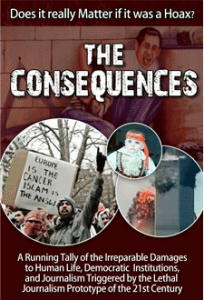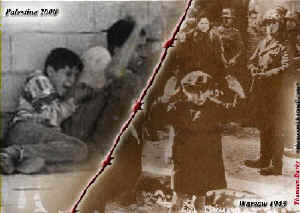
The Consequences and Repercussions
of the Al Durah Incident
The video footage of the Al Durahs released to the international media depicted a boy shot and killed by Israeli fire, dying in his father’s lap. The select footage and running commentary painted a picture of unimaginable callousness and brutality on the part of the Israelis, which instantly elevated the boy to the status of martyr and transformed the incident into a tool for incitement and revenge. So much so, that within months of the incidents first appearance, Osama Bin Laden released a video recruiting for global Jihad which used the boy’s image centrally to mobilize hatred not only against Israel, but anyone who supported her, and any Arab leader who failed to avenge the boy’s death.
In the West, especially in more radical circles, this image became a major promoter of a kind of substitution theology long promoted by Palestinians, in which the Israelis were the new Nazis, and the Palestinians, the new Jews. Groups like International ANSWER produced iconic presentations equating Al Durah and the Holocaust.
 And even mainstream reporter like Catherine Nay spoke for a broad range of French public opinion when she declared that “this death [sic] replaces, erases the image of the boy in the Warsaw Ghetto.”
And even mainstream reporter like Catherine Nay spoke for a broad range of French public opinion when she declared that “this death [sic] replaces, erases the image of the boy in the Warsaw Ghetto.”
Even beyond the use of the Al Durah imagery to justify unimaginable violence, and accuse Israel of the most heinous crimes in history, the image’s success had consequences that threaten the very heart of journalism and democratic institutions in the West. A school of journalism that we call alternatively “lethal-” or “Durahjournalism” gained dominance in the coverage of the Middle East, which mainstreams Palestinian and Arab lethal narratives about Israel into the information circulation system of the West as news. The decline in journalistic standards, the spread of an ethos of manipulation of the public “for its own good” and the mobilization of a “pack mentality” that resists any serious dissent within the mainstream, has created a crisis in journalism in the West in which the depiction of reality (the job of the journalist) has resulted not merely in distorted images, but inverted ones.
And since the news media are the eyes and ears of civil society, it is most dangerous for us to be blinded at a time like this.
